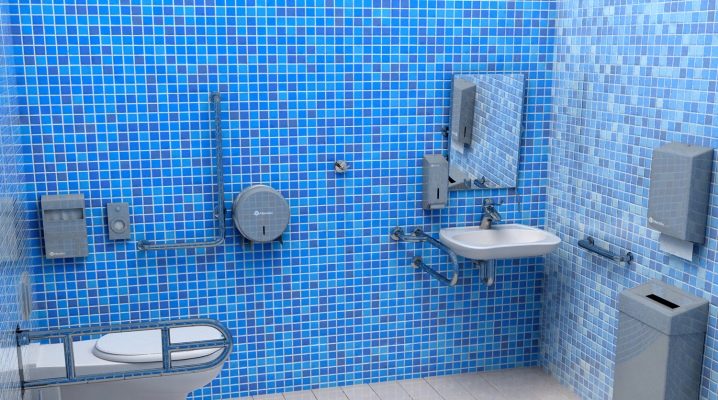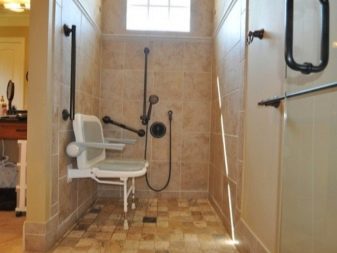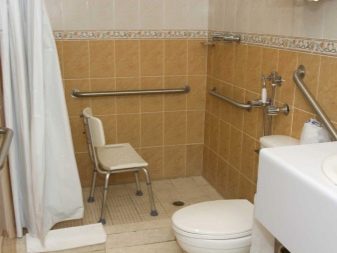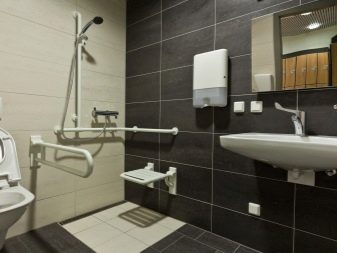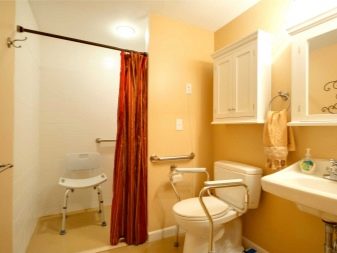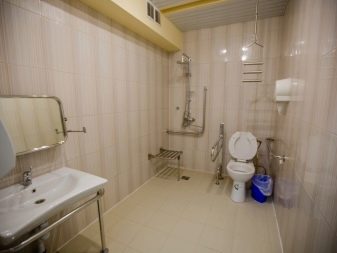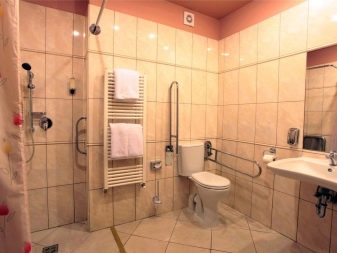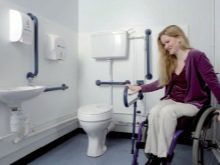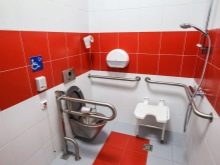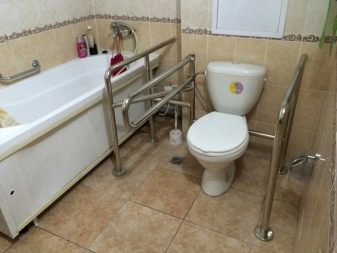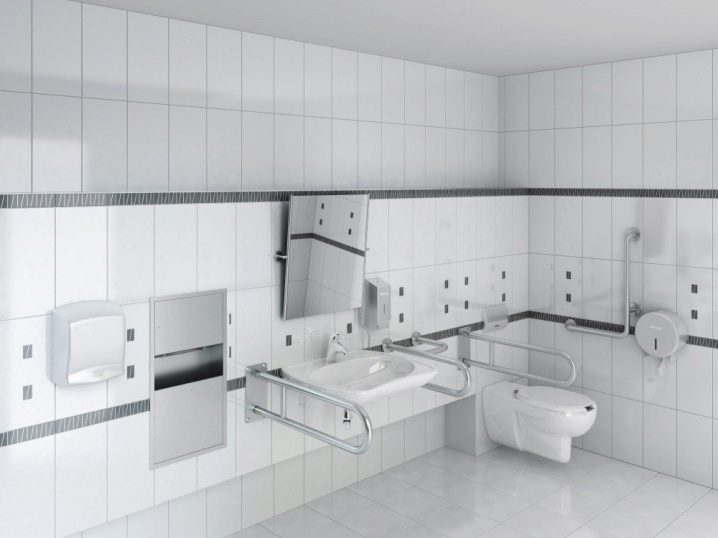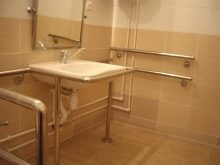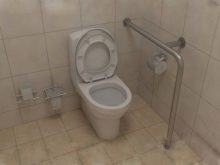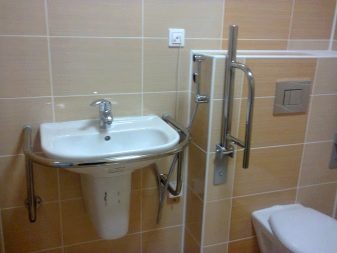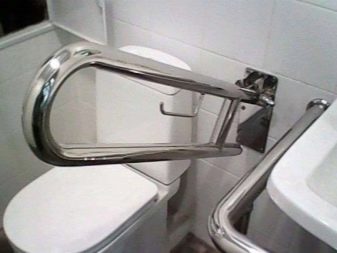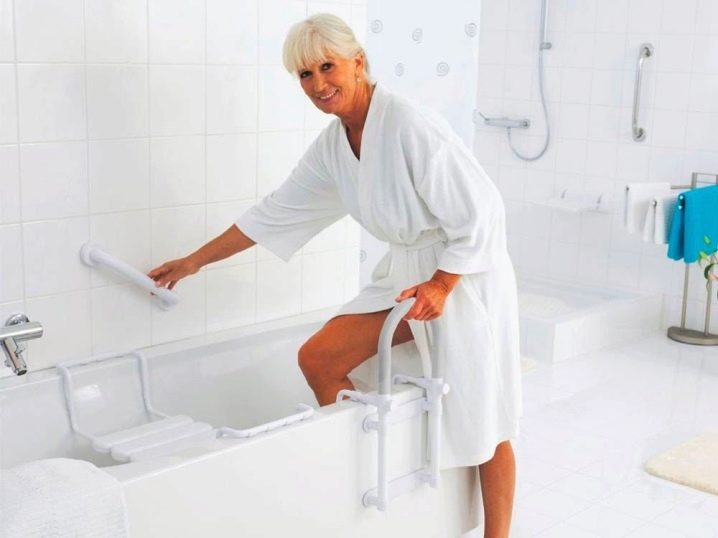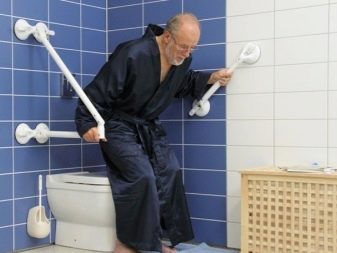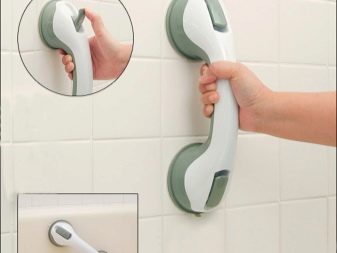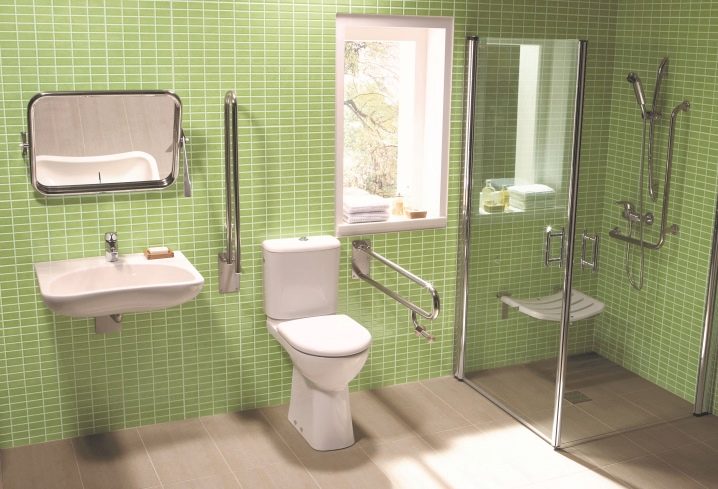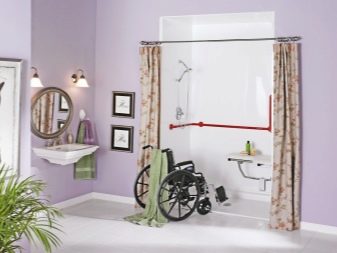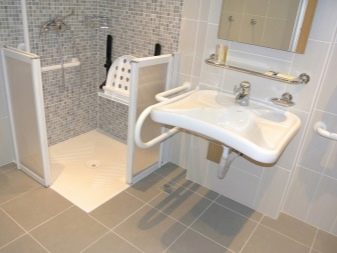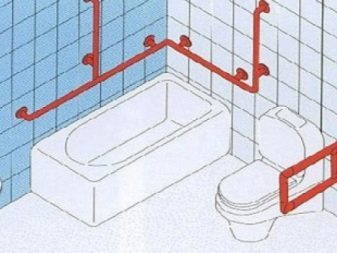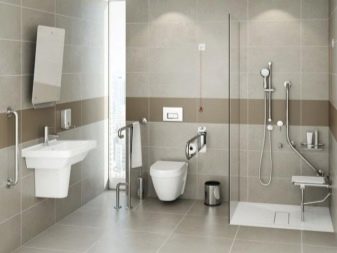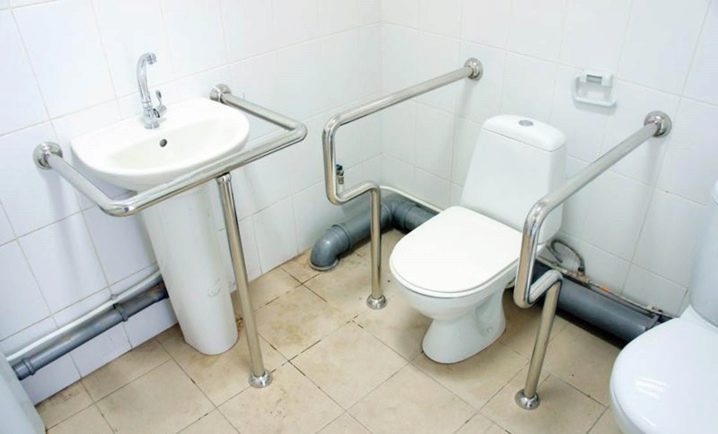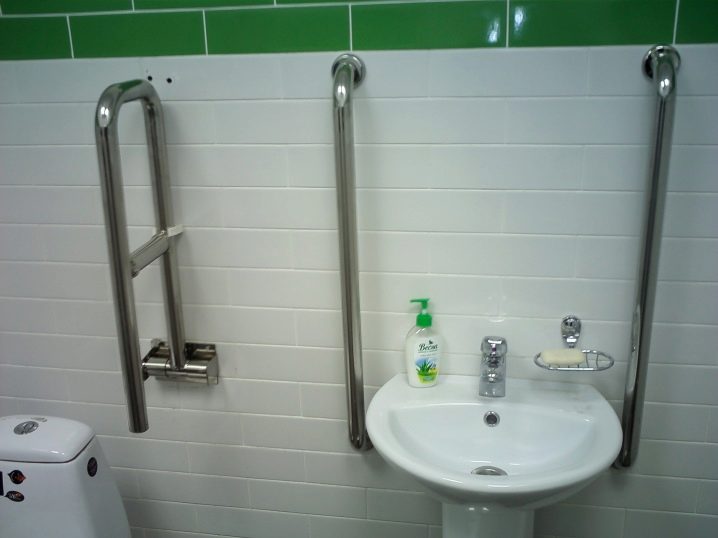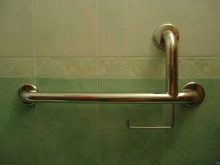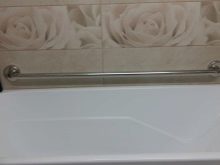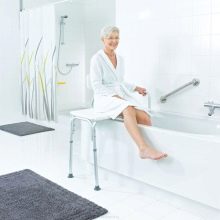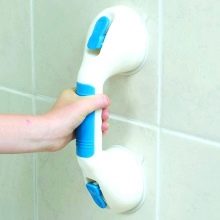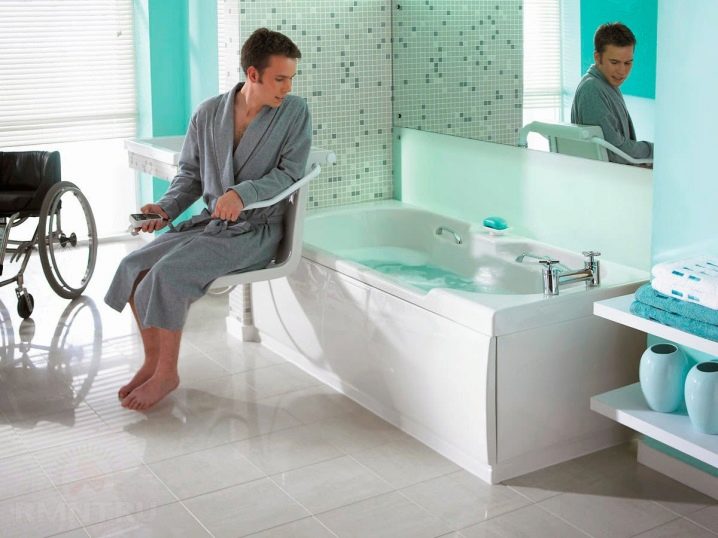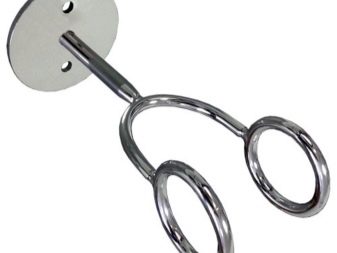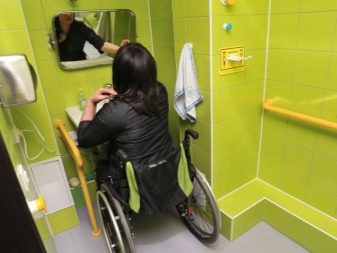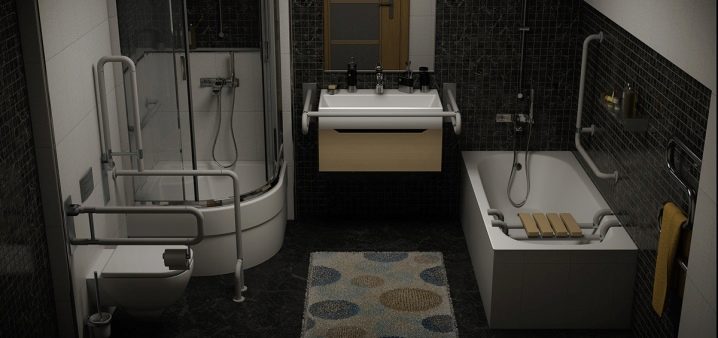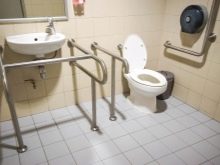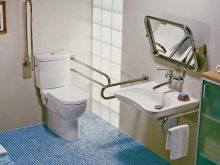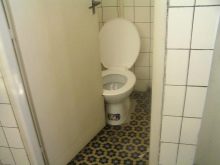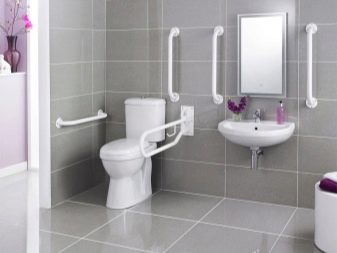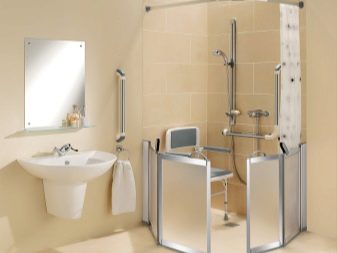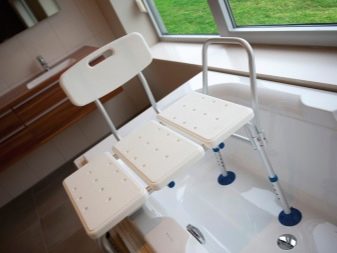Recommendations on the choice of handrails for people with disabilities in the bathroom and toilet
Such socially vulnerable categories of the population, such as the elderly and the disabled, need special care. Special conditions must be created for them, not only in social terms, but also in everyday life. Sometimes even the most familiar everyday procedures for them become a real test: get out of bed, wash your face, get dressed, go out. Modern society seeks to embody the concept of independent living and equality of all social strata. Old age and disability should not be an obstacle for a person on the way to normal life. For this purpose, special rehabilitation tools and devices for adaptation are created and widely used, which, in particular, include handrails for people with disabilities in the bathroom and toilet.
Advantages and disadvantages
Today, all social institutions, health care, public and private boarding schools, boarding houses, sanatoriums must be equipped with handrails. In large shopping centers special toilets for disabled people and other people with limited mobility are equipped. All entrances in new buildings are completed with handrails and ramps, which are convenient to use not only for older people and people with disabilities, but also for mothers with wheelchairs and children of preschool age. Increasingly, handrails are installed in the bathrooms of flats where the elderly, people with disabilities live, people of any age in a difficult postoperative period, for which care and personal hygiene are especially important.
Among the advantages of this type of devices you need to highlight:
- Ease of use - no complicated bulky structures;
- Independence - thanks to handrails and other special appliances for the bathroom and toilet, the elderly and disabled can do without outside help;
- Reliability - handrails are firmly mounted to the wall or floor and can withstand loads up to 150 kg;
- The versatility of the design - the modern market of means of rehabilitation offers handrails for right-handers and left-handers made of a variety of materials at affordable prices;
- Durability - steel handrails do not rust, do not crack, are subject to any loads and water, which allows them to be used as long as possible.
Speaking of flaws, we can distinguish a certain degree of complexity of installation.
It is recommended to trust the job of installing handrails to professionals, because there are special rules and regulations for the installation of these structures depending on the models and purpose:
- height from the floor;
- distance from the wall;
- tilt angle and so on.
And also from the minuses it is worth noting the following. Despite the ergonomic design and variety of finishes, handrails in the bathroom and other non-specialized areas do not always fit well into the interior. Often the installation of handrails is a necessary measure, rather than a design element.
Types and characteristics of structures
Depending on the destination handrails can be divided into several types.
Stationary
This type of construction includes wall straight or corner handrails. They are installed above the bath, as well as in the case when a person with a disability or an elderly person is overweight.Floor-standing stationary structures are installed only in conditions of a rather large area of the bathroom.
Folding and swiveling
Such handrails are used, on the contrary, in small-sized premises, allowing the disabled person to move freely, deflecting handrails against the wall or dropping them when necessary. As a rule, they are installed next to the toilet, allowing a person in a wheelchair or with problems of the musculoskeletal system to be able to approach the toilet. Folding handrails for convenience can be equipped with a hook for toilet paper, and swivel additionally equipped with a soap box.
The advantage of this type of handrail is the possibility of unhindered access to sanitary and household appliances, ease of cleaning the room.
Steps
Special handrails, steps - an indispensable attribute in the bathroom for the elderly. With age, immersing yourself in a bath becomes a real problem, especially if for health reasons there are problems with joints, coordination and orientation in space. Also relevant for people after a hip fracture, restricted in movement.A special stage allows you to go into the bath and get out of it without much physical exertion. The step can be single, double, and also completed with an additional basic element - the handle.
The two-stage design is higher and more stable, but it also has more weight than the single-stage design.
On suckers
This type of handrail is most often made of plastic, is notable for its ease of construction and mobility - the handrail can be installed in a new place, where it is necessary, and cleaned at the end of water procedures, which does not burden the bathroom interior. However, the lack of such models is the lack of reliability: the handrail on the suction cups can slip off if the mounting surface is soapy, or even completely detached from a high load. Even the most high-quality materials of hand-rail on suckers cause psychological fear of use in elderly people.
Suckers themselves wear out quickly, and they have to be changed quite often.
Rigid fixation
These handrails are similar to stationary ones, but they are distinguished by their special strength due to double fixation: against the wall and the floor at the same time.Due to this, maximum reliability is achieved. This is especially true for people with high weight. Hard fixings can be installed both along the wall and perpendicularly to it (for example, near the toilet bowl), which significantly reduces the free square meters of the room.
Primary requirements
There is a special legal act - the Code of Rules No. 59.13330.2012 “Accessibility of buildings and structures for people with limited mobility”. This document outlines the basic requirements for special equipment that provide people with disabilities unhindered access to the premises for various purposes.
If there is a need to equip a bathroom or toilet with special handrails, you should seek help from professionals.
Installation errors can lead to injuries, so the issue of economy is inappropriate here. When choosing the appropriate design should also consult a specialist. In the case when it is necessary to equip with handrails a bathroom in a public building (shopping and entertainment center, health care institution), call special teams of builders, assemblers, who will install handrails in the shortest possible time in accordance with all regulatory requirements.This is especially important, because before putting the object into operation it is accepted by a special expert commission. In case of non-compliance with SNiPs, permission to enter the building into operation will simply not be issued.
When installing handrails for private use, you can do it yourself, but first you need to carefully examine the necessary installation requirements. As a rule, in specialized stores, complete with handrails, all the necessary fastening elements, accessories and instructions for assembly and installation go. The brackets, hinges and decorative plugs are also supplied, but in rare cases they need to be purchased separately. The installation of handrails in the home should correspond to the individual characteristics of an elderly person or disabled person: his height, weight, and physique. Some diseases lead to dysfunction of the motor functions of the limbs (Parkinson's disease, strokes, paralysis), so when installing handrails should focus on the working hand.
Popular materials
The most popular materials in the manufacture of handrails are several options.
- Steel - the most durable material, ensures maximum reliability of stationary structures. Steel handrails can be additionally coated with enamel, which gives them a more aesthetic look, and they fit perfectly into the design of the bathroom. Stainless steel perfectly tolerates care with any disinfectant.
- Brass - very strong alloy capable of withstanding a load of up to 160 kg. Differs in the high durability of a design. And also brass has anti-corrosion properties.
- Chromium - a safer material, its surface prevents sliding during operation in rooms with high humidity.
- Reinforced impact resistant plastic used to create small wall structures.
Features of devices for various rooms
In the bathroom, for additional security, special devices can be used: handles on suckers that are attached directly to the walls of the bath, an anti-slip mat spreads to the bottom, special benches or swivel chairs are used to facilitate the transfer from the bath to the chair.
To ensure the approach and immersion in the bath are often used mobile mobile steps. The design is quite stable and can withstand a lot of weight, so that it is easily used by older people who are afraid of falling.
There are special mirrors with lights and a swivel handle for the convenience of wheelchair users. This design allows you to tilt the mirror at the desired angle.
In case of hip fractures, the elderly are forbidden to sit down deeply, so if the toilet is too low, a special attachment is installed on it, which reduces the load on the hip joint, and the handrails on both sides help to rise safely.
They even sell special hooks for crutches, which are installed in the toilet. They are used for hanging crutches and canes at a convenient height so that they do not fall down and fall behind the toilet or sink.
Safety recommendations
In the toilet handrail is mounted to the bearing wall. If there is none, and replaces its drywall partition, an additional tab should be made that can withstand a load of more than 100 kg. If possible, handrails should be mounted on both sides of the toilet bowl,that will allow the disabled person to change on his own and safely get up.
In the bathroom, the handrail is mounted along the wall to which the bathtub is fitted. It is recommended to use materials with a chrome-plated, non-slip coating. Bathrails can be additionally rubberized, or a special thread is applied on their surface. When choosing a suitable design, this should be considered for safe operation.
Handrails for the sink, as a rule, are mounted around the perimeter, completely skirting the plumbing.
With this installation approach to the sink will be provided at any angle. The handrail should be no more than 10 cm wide. Such a distance is necessary for free gripping and you will not need to reach for the washbasin.
Experts give a few tips and recommendations for comfortable bathroom equipment:
- when choosing a suitable design, you should focus on the dimensions of the room;
- the doors to the bathroom should open outwards, and the threshold should be minimally low or completely absent;
- Do not skimp on additional accessories (toilet paper hook, towel holder,built-in soap dish), they increase the price of the design, but introduce maximum comfort;
- switches and door handles should be placed at an acceptable height so that the person on the wheelchair can easily reach them.
Thus, the healthcare industry today aims to provide maximum comfort for people with disabilities.
Special devices and means of rehabilitation help to make their lives as independent and complete as possible. Handrails and other appliances in everyday life make it easier to care for elderly relatives and people with disabilities, improving their quality of life.
Video review of handrails for people with disabilities Mobeli, see the next video.
